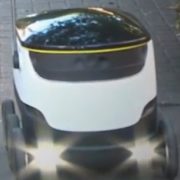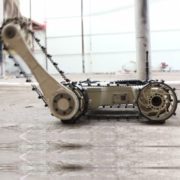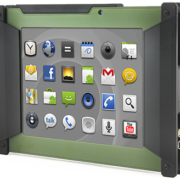The headlines are clear. Murder Rates Rising Sharply in Many U.S. Cities declares the New York Times. Echoing other media outlets, it ominously describes sharply increased homicide rates in at least 30 American cities. New York, Philadelphia, and Dallas all report a rise in murders. After decades of a decreasing crime rate, why is there a sudden uptick?
The murder rate is still low – for us
To get an idea of why the murder rate has suddenly increased, it would be good to know why it went down in the first place. For example, in 1990, New York City had more than 2000 homicides. By 2014 that number was just over 300. Even with the recent increase, the national homicide rate is just a fraction of what it once was (America still has one of the highest rate of violent crimes in the industrialized world. We’re number 1!).
The only honest answer about the cause of the decrease in the murder rate is that we don’t know. Some point to improved policing policies. Some say it was an increase in mandatory sentencing, while others cite the removal of lead from our environment and even legalized abortion as possible causes (Vox). This is a topic that has been extensively studied, but the conclusion of the academic world seems to be a collective shrug. About the only thing we know with any certainty is that the much celebrated “broken windows” policy had nothing to do with the national decrease.
A watched cop never works
The fact that we do not know why crime went down in the first place has not stopped some from speculating about the recent reported increase. FBI Director James Comey has coined the term “Ferguson Effect.” According to his theory, increased scrutiny of the police by the public and video cameras has had a chilling effect. Police are too intimidated to do their jobs.
Comey has been forthright in acknowledging the lack of evidence for his idea (Guardian). As pointed out by others, the increase in crime, at least in St. Louis, predated the troubling events in Ferguson.
Whatever the evidence actually is, there is something insulting about this theory. Is the FBI Director really arguing that if police can’t shoot and beat up unarmed civilians, they won’t fight crime? Are police really so sensitive and immature that in the face of public criticism and scrutiny they won’t carry out their critical duties? If this is true, then the anti-police brutality activists have underestimated how bad the situation is.

Build-Your-Own-Module (BYOM)
Tablet Modules

SINGLE FINGERPRINT SCANNER
DUAL FINGERPRINT SCANNER
DUAL FINGERPRINT SCANNER
SMART CARD READER
MAGNETIC STRIPE READER
2D BARCODE READER
Compatible models:
BioSense & BIOPTIX Tablets

Build-Your-Own-Module (BYOM)
Smartphone Modules

DUAL FAP45 FINGERPRINT MODULE
SINGLE FAP45 FINGERPRINT MODULE
Compatible models:
BioFlex® Smartphones
Too darn hot
Alternative theories for the increase in the homicide rate are rare (for reasons which will be discussed below). On my own, I can think of at least two other possible causes.
One of the oldest and strongest correlations observed by social scientists is the relationship between temperatures and crime. When it gets hotter, crime goes up. The summer in 2015 was the hottest in 135 years (Huffington Post). The connection between heat and crime is so well-known that I am a bit surprised that no one in the media has mentioned this as a possible cause.
The second possible cause is even more controversial, but has important proponents. “The proliferation of firearms is one of the factors behind a rise in homicide rates in many U.S. cities this year, according to senior law enforcement officials at the International Association of Chiefs of Police conference in Chicago” (Business Insider). Furthermore, as the New York Times reports about recent new gun laws, “Nearly two-thirds of the new laws ease restrictions and expand the rights of gun owners.”
More guns, more crime, asserts this theory. For a variety of reasons, I do not believe this is even remotely correct, but it has as much evidence, if not more, as the “Ferguson effect.”
You may have heard about the “Ferguson effect,” but not of competing theories. Why? Because when researchers studied recent patterns of criminality, they discovered there has been no increase in homicide rates.
Statistics are pure evil or the science that even smart people hate
I have studied statistics as an undergraduate at Yale and at a graduate level for a healthcare course. When people ask me about it, I point to my bald head, and state that “Before I studied statistics, I had hair.” I’ve seen brilliant mathematicians and physicists despair when confronted with the challenge of analyzing probabilities.
So it is with a great deal of trepidation that I embark on a discussion of the statistics behind the crime wave. Don’t worry; I will try to keep this as simple as possible.
It is very easy to misunderstand or misrepresent statistics. For example, the New York Times article cited at the beginning of the post describes an increase of homicide in 30 cities. It doesn’t mention the decrease in homicides in dozens of other cities, such as Indianapolis, San Diego, and Columbus. As hard as it is to believe, simple cherry picking of evidence is a major factor contributing to the media’s outcry about the so-called crime wave.
To be fair, there has been an increase in the murder rate, at least for some of the largest cities, but it is far from significant. Take a look at the following statistics:
 Source: Washington Post
Source: Washington Post
Looks pretty bleak, right? Homicides have definitely increased. Now add a little more information:

Even with the so-called “sharp increase,” the homicide rate is still lower than it was in 2012, or any other time since 1985. With the added information, the increase in the homicide rate doesn’t look as dire as it did before.

Build-Your-Own-Module (BYOM)
Tablet Modules

SINGLE FINGERPRINT SCANNER
DUAL FINGERPRINT SCANNER
DUAL FINGERPRINT SCANNER
SMART CARD READER
MAGNETIC STRIPE READER
2D BARCODE READER
Compatible models:
BioSense & BIOPTIX Tablets

Build-Your-Own-Module (BYOM)
Smartphone Modules

DUAL FAP45 FINGERPRINT MODULE
SINGLE FAP45 FINGERPRINT MODULE
Compatible models:
BioFlex® Smartphones
“We have no idea what’s going on” is a bad headline
As reported by the Washington Post, the evidence for a spike in the homicide rate is mighty thin. Despite the alarming headlines, the changes have not been very dramatic. It is impossible to tell if the recent spike in some cities is a genuine change or a simply a normal variation.
Crime statistics are notoriously variable. A single domestic incident may raise the annual murder rate for a medium-size town from 4 victims to 5 victims. That’s a 25% increase, far larger than the homicide rate spike that we have been discussing.
The lack of definitive proof hasn’t stop people from reaching conclusions based on their preconceived notions or trying to exploit headlines for political gain. No police chief ever went to a town council and said, “I need a big budget increase, because the crime rate has significantly fallen.” No newspaper ever ran a headline with “FBI releases inconclusive and meaningless statistics.”
Of course, the recent homicide increase could be a start of a disturbing trend. However, we won’t know for months, if not years. Before we start manning the barricades, let’s take a deep breath, and evaluate the evidence rationally.
Wouldn’t it be great if someone ran the headline, “Politicians and media figures urge calm intelligent action”? That would definitely be a new trend.

















